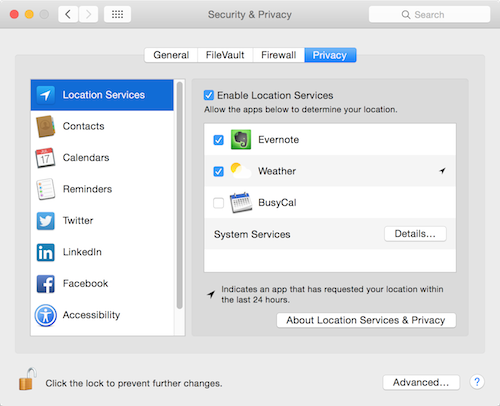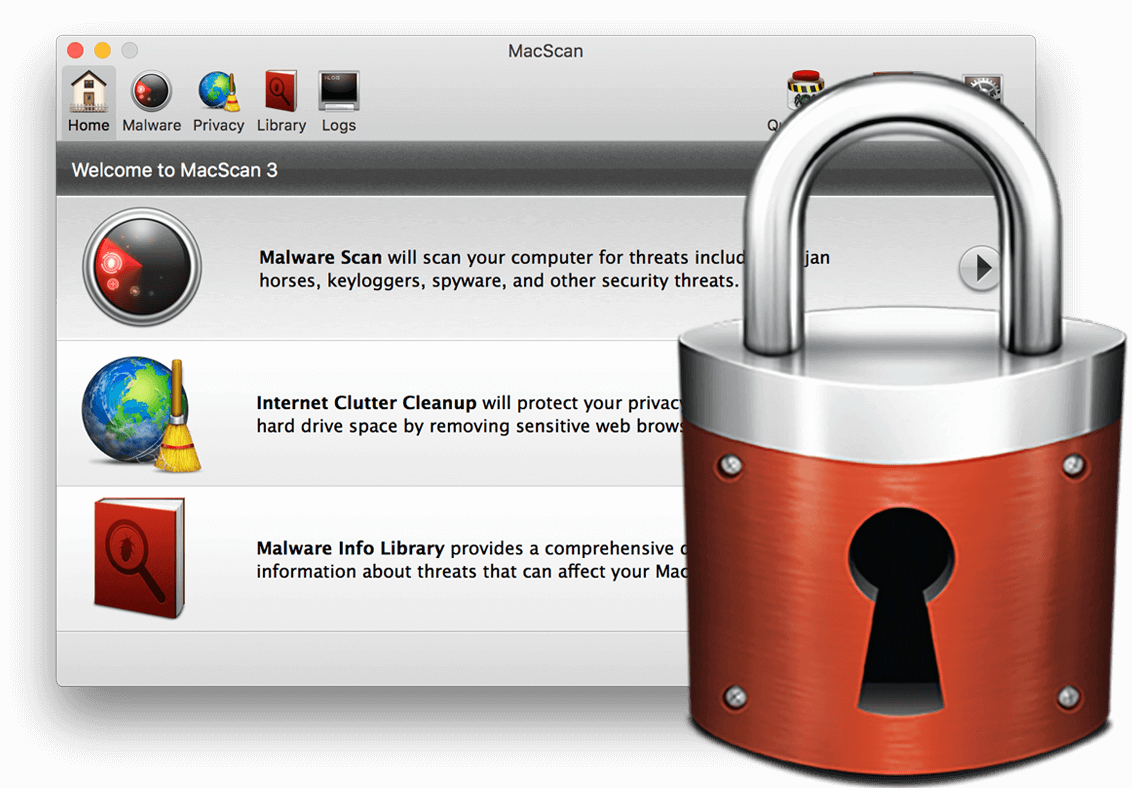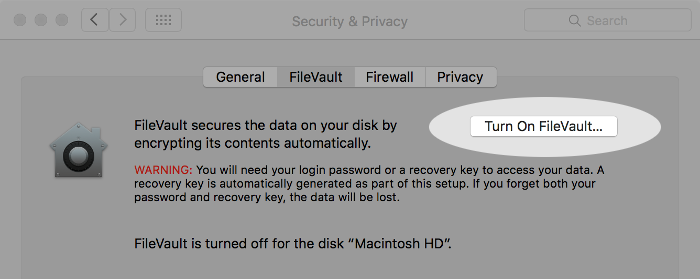Privacy Protection For Mac
Follow these easy steps to protect the personal data on your device running macOS or Mac OS X.

1. Easily encrypt your Mac with the built-in FileVault.
Turn FileVault on to make your files are unreadable if someone else gets hold of your computer while powered off or locked.
How:System Preferences > Security & Privacy > FileVault
2. Set a password for your account and disable automatic login.
Remember to require your password after your Mac sleeps and of course, use a strong, lengthy password. Note that Disable automatic login has been removed from macOS Sierra.
How:System Preferences > Security & Privacy > General
Defend yourself and the entire family against the latest virus, malware, ransomware and spyware threats while staying on top of your privacy and identity. McAfee Total Protection is easy to use, works for Mac, PC & mobile devices & is your best bet to stay safer online. The AbruStop Privacy Protection package is a Mac OS X application firewall that protects the customer's private data by preventing, known and unknown, software.

3. Update macOS regularly.
Don’t ignore those installation prompts! Remember you can check for updates at any time.
How:Apple icon > About This Mac > Software Update
4. Make sure the firewall is turned on.
Enabling the built-in firewall will block incoming connections. You can also choose to allow only signed software to accept incoming connections under Firewall Options.
How:System Preferences > Security & Privacy > Firewall
5. Enable stealth mode.
Being in stealth mode means your Mac will not respond to connection attempts from the network.
How:System Preferences > Security & Privacy > Firewall > Firewall Options
6. Set the computer to log out after a period of inactivity.
The default for automatic logout is 60 minutes but shorter is better.
How:System Preferences > Security & Privacy > General > Advanced
7. Require an admin password for system-wide changes.
This helps protect against malware doing widespread damage.
How:System Preferences > Security & Privacy > General > Advanced
8. Control which apps are accessing your location.
Verify what’s using your location data and disable any location services you don’t need.
How:System Preferences > Security & Privacy > Privacy > Location Services
9. Restrict which types of apps are allowed to run on your Mac.
For more protection, grant permission only to the Mac App Store.
How:System Preferences > Security & Privacy > General
Free download Benchmark Benchmark for Mac OS X 👍. Benchmark 🎳 makes it possible to model the performance of an engine, a propeller, and an airplane and then fly the plane in any flight conditions to assess performance and efficiency. Mac os benchmark.
10. Review which apps have access to sensitive data.
In particular, protect personal data such as your contacts and calendar info.
How:System Preferences > Security & Privacy > Privacy
11.Stop sending diagnostics and usage data.
This data can include information such as the apps you use and your location.
How:System Preferences > Privacy > Diagnostics & Usage
12. Check which sharing services are enabled.
Disable things like screen sharing, file sharing, printer sharing, remote login, etc. unless you’re sure you need them.
How:System Preferences > Sharing
13. Install DuckDuckGo Privacy Essentials in your browser.
Our Privacy Essentials browser extension has built-in tracker network blocking, smarter encryption, and, of course, private search, all designed to operate seamlessly together while you search and browse the web.
How: Get the extension for popular browsers from https://duckduckgo.com/app
Congratulations! You’ve just taken a big step to increasing privacy and protecting the data on your Mac. If you’d like to delve further, we recommend this in-depth technical guide.
⇲ You can also download a printable PDF of all these tips.
For more privacy advice, follow us on Twitter & get our privacy crash course.
The Mac line of computers are some of the finest on the market today. Both in raw specs and efficiency a Mac is hard to beat. Apple is also strongly committed to making privacy features transparent to the user. Many users fail to realize the importance of taking the time to adjust their privacy features, which leaves them vulnerable to exposing personal information online. In only a few minutes, you can adjust your Mac’s privacy settings to secure your data.
Privacy on Mac
Mac has long had a reputation for security and privacy. User privacy has been a priority to Apple for years. Unfortunately, in the past year, there have been some public stumbles. While Apple remains publicly committed to security and privacy, some large mistakes have come to light, especially with the release of the High Sierra update for Mac. A particularly troublesome bug emerged in September of 2017 that allowed users to gain root access by typing ‘root’. This would allow almost unlimited access to all data on an affected Mac.
While Apple has patched the bugs quickly, at times even the patch has been plagued by bugs. This leaves many users wondering if there aren’t still other vulnerabilities lurking on their Macs. Changing your privacy settings can help ensure your data isn’t compromised in the event of new bugs surfacing.
Keep Hackers Out
Firewall protection is a standard feature needed on all computers connected to the internet. Mac comes with a firewall built into the computer, but this feature is not always turned on by default. One of the first things you should do to protect your Mac is to ensure your firewall is enabled.
Open the System Preferences and click on ‘Security & Privacy.’ Here you will find several settings to adjust to help protect your Mac. Click on the padlock on the bottom left of the dialogue box and enter your user name and password to enable access to these settings.
Click on the ‘Firewall’ tab to pull up the Firewall settings. Now click on ‘Turn On Firewall.’ You can also adjust the Firewall settings by clicking on the Firewall Options button. Here you can change which apps and services can send or receive data through the Firewall. This can be useful if you want to largely block all apps except for one or two.
Encrypt Your Data
No matter how well you secure your system, there is still the possibility that a determined hacker could gain access to your data. While encrypting your files may cause you some inconvenience, it is important. The FileVault ensures that your data is unreadable even when it is stolen.
FileVault secures your information by encrypting all the files on your Mac. This takes some time for the encryption routine to run when you first enable it. There is also the inconvenience of having to enter your password any time you want to open a file. However, this is a small price to pay for the peace of mind that comes from knowing your data is secure.
In the ‘Security & Privacy’ screen, click on the FileVault tab. Click the button labeled, ‘Turn On FileVault…’ to start the process. You will be given a recovery key. You must use either the recovery key or your account password to unlock the files on your computer. If you forget both of these, you will lose all access to those files.

Check Your App Permissions
Apps need permission to access critical services on your Mac. Sometimes, though, these apps can access information that isn’t strictly needed for the app to do its job. In the privacy settings you can choose what apps have access to what information.

Privacy Protection For Mac Catalina
From the ‘Security & Privacy’ screen, click the ‘Privacy’ tab. One of the most important decisions you can make to safeguard your privacy is to restrict access to your location. While other sources of information rely on how you access the internet or use the Mac itself, location services can tell app makers a lot about who you are and what you do offline.
Click on ‘Location Services’ in the left pane. This will bring up a list of all the apps on your Mac that can access your location. Uncheck each app that you don’t want to allow access to your location data.
In a similar manner, you can restrict which apps have access to your contact information, your calendar, and your reminders. Simply uncheck each app in the appropriate category to take back control of your privacy.
Is Siri Listening to You?
There is a joke among privacy experts that goes, ‘Americans used to worry about the government bugging their phones and houses, now they pay Apple to do it for them.’ While Apple maintains the data collected by Siri is secure, it is true that Siri is listening to every conversation to pick up keywords directed to it. Siri can also read emails and private messages as well as the contents of your documents. This information is often stored and analyzed to improve services. If you are concerned about Siri’s ability to listen in on you through your Mac, you should disable it.
From the System Preferences screen, click on the Siri icon. Directly under the Siri logo on the Siri screen, you can uncheck ‘Enable Siri’ to disable the service from your Mac.
Data Privacy Protection
Staying Anonymous in a Connected World
As more of our information becomes available to advertisers and others online, keeping personal information private becomes more of a challenge. Using a VPN is one of the simplest steps you can take to ensure your privacy is protected today.
Privacy Protection Act
When you connect using a quality VPN service, your data is encrypted as it travels to and from the VPN server. Your traffic travels through the VPN server and is encrypted. This middleman approach means that you remain anonymous in the information exchange. You may notice the ads you see while online are no longer quite as personalized as before. This is a result of advertisers having no way to connect your online activities to your IP address.
There are many benefits to using a VPN beyond just privacy. To learn more about how a VPN may help you, read our post on choosing the best VPN for your needs.
